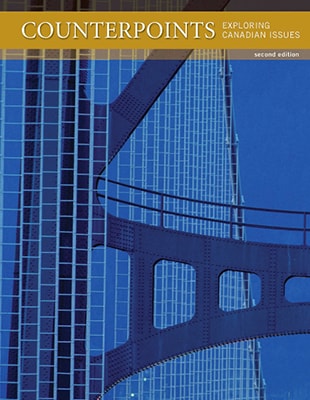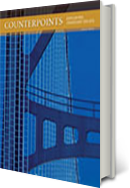
Discipline
Program Type
Core
Copyright
2010
Delivery Method
Blended (Print & Digital)
Province
British Columbia
Imprint
Pearson Canada
What’s new in the second edition?
100% congruence with revised curriculum.
Built-in support for the provincial exam.
Features that Enhance Student Engagement.
Support for Student Readability.
Table of Contents
Please select a resource to view the table of contents:
Society and Manners
Still a British Nation
Canada’s Changing Population
Counterpoints: Is today’s government responsible for injustices of the past?
Up Close and Personal: Joe Capilano: Champion of Aboriginal Land Rights, or Troublemaker?
Building your Skills: Analyzing Evidence: Primary and Secondary Sources
Innovations: Farther and Faster
An Economy Transformed
Resources and the Environment
War and Change
Chapter Review
Chapter 2: Canada and the First World War
Causes of the First World War
Building Your Skills: Interpreting Political Cartoons
Canada’s Response to the War
The War on Land
Major Canadian Battles
Innovations: War Technology
The War in the Air
The War at Sea
The Home Front
The Conscription Crisis
The End of the War
Canada’s Emerging Autonomy
Counterpoints: Did the war have a positive or negative effect on Canada?
Canada After the War
Chapter Review
Chapter 3: Canada in the 1920s
An Uneasy Adjustment
Canada’s Changing Economy
The Roaring Twenties
Innovations: Canadian Inventions and Inventors
Missing the Roar
A New Challenge to Federalism: Regionalism
Canada’s Growing Independence
Building Your Skills: Establishing Cause, Effect, and Results
Counterpoints: Was Canada More or Less Independent by the End of the 1920s?
The Stock Market Crash
Chapter Review
Chapter 4: The 1930s: A Decade of Despair
Causes of the Great Depression
The Desperate Years: Making Ends Meet
Responding to the Depression
Counterpoints: How involved should the government be in the economy during a depression?
Politics of Protest
Building Your Skills: Decoding Photographs
Innovations: Medical Advances
The Depression and Global Politics
Chapter Review
Chapter 5: Canada and the Second World War
The Rise of Totalitarianism
Causes of the Second World War
Canada’s Response to the Threat of War
Canada Declares War
Axis Advances
Canada’s Contribution to the War Effort
Innovations: Advances in War Technology
The Tide Turns
Building Your Skills: Reading a Map
D-Day: The Normandy Invasion
Counterpoints: Are weapons of mass destruction ever justified?
Crimes Against Humanity
The War at Home
What the War Meant to Canada
Chapter Review
Unit 1 Study Guide
UNIT 2: Refining an Identity: Canada in the Post-War Years
Chapter 6: Canada in the Post-War World: The 1950s
The Changing Face of Canada
Building Your Skills: Analyze Period Advertising and Propaganda
New Times, New Leadership
Post-War Prosperity
Innovations: 1950s Technology
The Cold War and Post-War Diplomacy
Counterpoints: Was the “Red Menace” Real?
Innovations: The Avro Arrow
Planning for Peace
Chapter Review
Chapter 7: Times of Turmoil: Canada in the 1960s and 1970s
Toward Social Change
Politics and Government
Building Your Skills: Assessing Viewpoints
Economic Challenges
Innovations: The Information Age
A More Independent International Policy
Counterpoints: Should Canada’s foreign policy be independent of the United States?
Chapter Review
Chapter 8: Canada Shifts Focus: 1980 and Beyond
Popular Culture and the Spirit of the Age
Innovations: The Wave of the Future
Counterpoints: Does Canada Need a Multiculturalism Policy?
The Fight for Aboriginal Rights
Constitution and Discord
Building Your Skills: Defend a Position on an Issue
New Economic Ideas
A New Era of International Action
Chapter Review
Unit 2 Study Guide
UNIT 3: Canadians and Their Government
Chapter 9: Citizens Effecting Change
Democracy Begins with the People
Influencing Government
Building Your Skills: Communicating with Politicians
Political Ideologies and Parties
A Guide to Government
Counterpoints: Can Citizens Have More Input in the Processes of Government?
Choosing the Government
Chapter Review
Chapter 10: Protecting Human Rights
What Are Human Rights?
Counterpoints: Are universal standards for human rights possible in a world of diverse cultural and religious beliefs?
Human Rights Legislation in Canada
The Charter in Action
Advocating for Your Rights
Aboriginal Rights
Gender Equity
Building Your Skills: Getting the Evidence: Separating Fact from Opinion
Children’s Rights
Chapter Review
Unit 3 Study Guide
UNIT 4: Human Geography: The Future in Balance
Chapter 11: Population Trends and Issues
World Population Growth
Demography
Building Your Skills: Designing Graphs
The Demographic Revolution
Population Profiles
Canada's Population: Past and Future
Counterpoints: Optimists Versus Pessimists: Are There Limits to Population Growth?
Where do Six Billion-Plus People Live?
Chapter Review
Chapter 12: Living Standards in a Changing World
Measuring Development
Building Your Skills: Evaluating the Accuracy of Web Sites
Measuring Living Standards
Measuring Poverty
Counterpoints: Offshore Farms: Food for Whom?
The Vulnerable Ones: Women and Children
The Health Crisis
Helping to Improve Living Standards
Counterpoints: Should Canada Link Its Foreign Aid to Human Rights?
Chapter Review
Chapter 13: The Environment: Our Challenges and Responsibilities
Why Care About the Environment?
Population Growth and Sustainability
Building Your Skills: Problem Solving and Decision Making
Water: The Indispensable Resource
Counterpoints: Should Canada Treat Water As a Resource to be Traded
Change Is in the Air
Doing Our Part for the Environment
Chapter Review
Unit 4 Study Guide
The Exam Skills Handbook will be a handy reference tool for students throughout the year and will be located within the student text itself. The Handbook will reside in the back of the text and will be 26 pages long. The following is a detailed table of contents that should help give you a flavour for what you will see when a complimentary copy of the new Counterpoints student text is mailed to you by the end of May. Enjoy!
Handbook Table of Contents
Ways You Can Study
- The “So What” Test
- Know What to Study
- Chunking
- Know Your Learning Style
Using the Textbook to Study
- Finding the Big Ideas
- Finding the Details
- Building Your Skills
Note Taking
- Two-column Method
- Outline Method
Designing Study Questions
- Creating and Using Flash Cards
- Creating Essay Questions
Organizing Your Information
- The 5Ws
- Cause and Effect Organizers
- Using Familiar Shapes as Organizers
Studying with Maps and Timelines
How to Prepare for Exams
- Knowing What to Study
- Types of Questions
Multiple-Choice Exams
- Chronological order
- Thematic order
- Keywords
- Relieving Stress and Avoiding Confusion
Taking Notes for Multiple Choice
- Politics and Government
- Autonomy and International Involvement
- Human Geography
- Society and Identity
Interpreting Graphic Information, Maps and Timelines
- Interpreting graphic information, historical maps, and timelines to answer multiple choice questions
Writing Exam Essays
- General Tips
- Content Paragraphs
- Conclusion
- Self Assessment of Your Essay
Essays—Understanding Command Terms
Define the following terms and explain the difference between them:
- Assess/Evaluate
- Describe/Discuss
- Compare/Contrast
- Explain/To What Extent
Thematic Essay
- Tips on how to organize facts into categories, such as social, political, economic, etc., for a logical essay
- Essay outline diagram and/or annotated example
Timeline Essays
- Tips on how to organize facts into timeline types of categories, such as WWI and Depression; WWII and the Cold War; and Post Cold War, for a logical essay
- Essay outline diagram and/or annotated example
Recognizing Fact and Opinion
- Define the meaning of each term
- Provide a paragraph that contains both facts and opinions
- Suggest what might be inferred from the content of the paragraph
- Show students how to support their point of view with relevant select data
Virtual Samples
